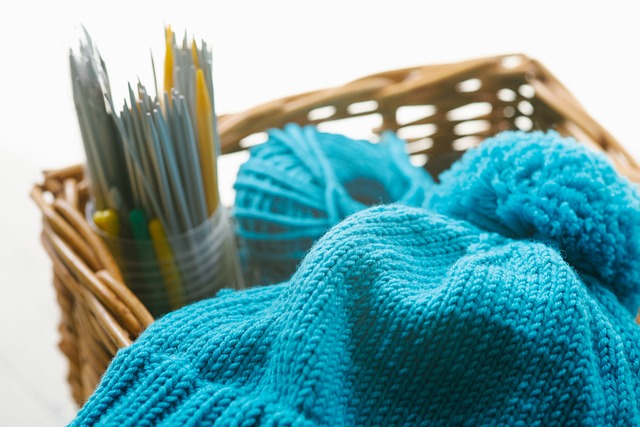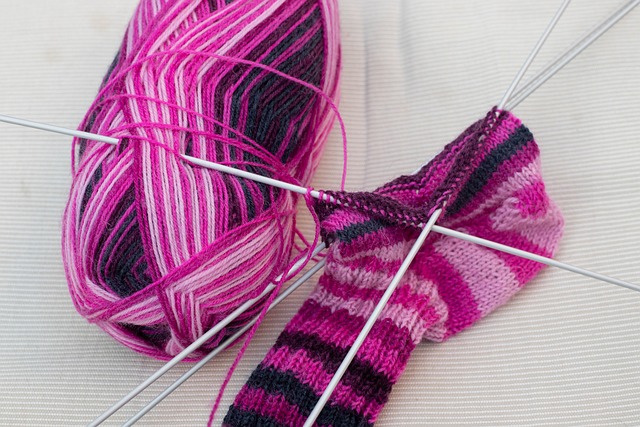Knitting is a popular craft that involves using needles and yarn to create fabrics, garments, and other items. This relaxing hobby traces back thousands of years across many cultures. Once you learn some basic techniques, you can whip up scarves, sweaters, baby clothes, accessories, and more. In this article, we have provided a helpful guide for beginners to learn the art of knitting.
Essential Knitting Supplies and Materials
Here are some essentials for every knitter:
- Knitting Needles: These come in a variety of sizes and materials like aluminum, wood, plastic, or bamboo. Choose the size needed for your yarn and project.
- Yarn: The yarn type determines the fabric’s structure, drape, and texture. Popular options include wool, cotton, acrylic, alpaca, cashmere, bamboo, and blends.
- Stitch Markers: These tiny rings or clips slide onto knitting to mark key points in patterns. Use them to denote increase/decrease stitches or separate sections.
- Tapestry Needle: Blunt-tipped tapestry needles allow you to easily weave yarn ends into finished pieces for invisible closures.
- Scissors: Dedicated knitting scissors used just for yarn keep blades sharp for clean cuts.
- Measuring Tape: Essential for checking gauge/tension and obtaining measurements to customize patterns.
- Knitting Gauge: This tool helps determine stitches per inch to ensure projects meet size specifications.
- Pattern: Start with a beginner-friendly simple pattern detailing exactly how to complete your first creation!

Basic Knitting Techniques
Knitting involves just two fundamental stitches: the knit stitch and the purl stitch. These stitches combined create all knitting patterns.
- Knit Stitch (k): With yarn held behind needles, insert the right-hand needle through the front of the stitch on the left needle, wrap the working yarn around it counterclockwise, pull this loop through, and let the stitch slide off the left needle.
- Purl Stitch (p): With yarn held in front, insert the right needle through the back of the stitch, wrap the yarn around it clockwise direction, pull that loop back through the old stitch, and slide the original stitch off the left needle once new one is formed.
By combining just knits and purls, you can create varying stitch patterns, including:
- Garter Stitch: Knit every row to produce this textured vertical stripe pattern.
- Stockinette Stitch: Knit one row, purl the next – making a smooth, flat piece.
- Rib Stitch: Alternate single knits and purls in a row, forming horizontal ribbed bands perfect for cuffs and hems.
- Seed Stitch: Alternate single knits and purls across the row, then reverse stitches in the following row, creating a bumpy mosaic effect.
- Cable Stitch: Reordering stitches to twist them together forms rope-like columns and textures.
Choosing Knitting Patterns
With limitless knitting patterns available in books and online, choosing the perfect first project can seem overwhelming initially. Consider these factors when selecting a beginner knitting pattern:
- Skill Level: Look for “beginner” or “easy” knitting patterns, ideally listing no prerequisite techniques. Avoid “intermediate” or “advanced” patterns utilizing complex stitches.
- Interest: Choose a starter pattern for an item you’ll enjoy making and wearing, like a scarf, cap, socks, or basic top. This provides motivation to persevere and finish.
- Yarn: Start with affordable and forgiving smooth yarns like acrylic, wool blends or super chunky yarn australia specified on the pattern to make learning easier.
- Size: Pare down variables by selecting baby/child or smaller adult-sized garments requiring less time and yarn to complete.
- Clarity: Ensure the beginner knitting pattern details every step clearly in plain language with photos or diagrams illustrating special techniques.

Factors to Consider When Buying Knitting Patterns
When you want to buy knitting patterns online or in stores, evaluate these aspects for enjoyable, successful results:
- Designer: Established designers with many clear, accurate patterns appeal to various experience levels and indicate reliable formulas.
- Reviews: Check independent sites for customer reviews highlighting details on the level of difficulty, errors, final product outcome, and creator support.
- Errata: Reputable designers correct errors get reported. Patterns should indicate if revisions exist or where to find corrections.
- Support: Many designers/sites offer FAQs, forums, email help lines, and live chat options to assist if questions arise mid-project.
- Price: Free or paid. Costs should align with the pattern quality, detail, and designer reliability. Compare similar version values.
Knitting for Complete Beginners: Handy Tips and Tricks
If knitting is totally new to you, these tips make getting started smooth sailing:
- Start Simple: Don’t get discouraged comparing your first wobbly scarf to a Fair Isle sweater. Building skills takes time and practice.
- Practice: Invest time playing with needles and yarn without distractions until stitches become fluid before tackling a full pattern.
- Ask for Help: Enlist an experienced knitter friend or join a beginners class or knitting group to mentor you through common hurdles.
- Join a Knitting Group: Learning alongside others provides community support to motivate you as you progress together.
- Have Fun: Knitting satisfies when enjoying the creative process. Don’t put pressure on perfection just yet – relish making mistakes to learn from along the journey!
Knitting Beyond the Basics
Once you master casting on, the two simple stitches, and binding off, try advancing to the next techniques:
- Lace Knitting: This openwork style combines yarn overs and precise decreases to form delicate decorative motifs.
- Colorwork Knitting: Add beautiful patterns by working two or more colored yarns strategically based on charted designs known as Fair Isle and intarsia.
- Cables: Twisting stitches together form thick intertwining columns across your piece – ideal for Aran sweaters.
- Knitting in the Round: Craft seamless tubes like hats and socks using circular needles or double-pointed needles designed to knit continuously in spirals rather than flat panels.
The Delight of Knitting
Beyond producing fabric, knitting offers much deeper rewards, enriching life:
- Creativity: Following patterns satisfies, while designing your own pieces from scratch ignites innovation. Knitting empowers translating thoughts into tangible items.
- Relaxation: The rhythmic motions produce a calm mindset. The absorption into work creates enjoyable, immersive downtime from stress.
- Accomplishment: Spotting finished objects made with your own hands fills you with immense satisfaction and pride.
- Connection: Sharing about projects and teaching others strengthens personal bonds. Knitting binds generations to pass on cherished knowledge.
- Warmth and Comfort: Whether snuggling into a cozy muffler outside or giving baby booties to expectant loved ones, handmade knits radiate love.
Conclusion
As you can see, knitting provides engaging challenges, comforting rituals, textured beauty, and the ability to clothe yourself and others in snuggly homemade creations. With a bit of guidance, beginners can discover the meditative joy of knitting, too. Simply start with quality supplies, easy patterns, and these fundamental techniques. Let your inner artist shine as you learn this empowering craft stitch by stitch. What will you start making today?














